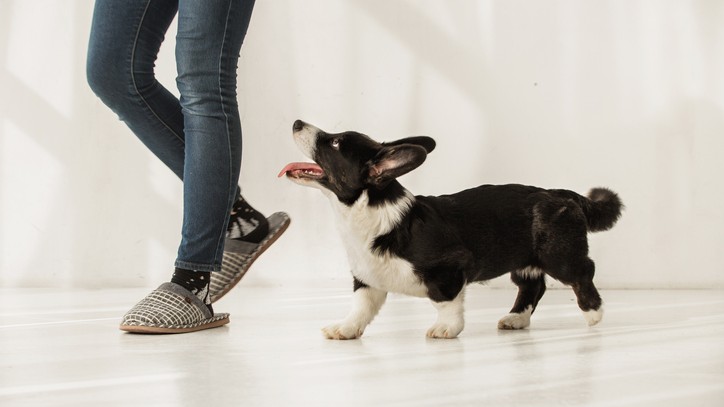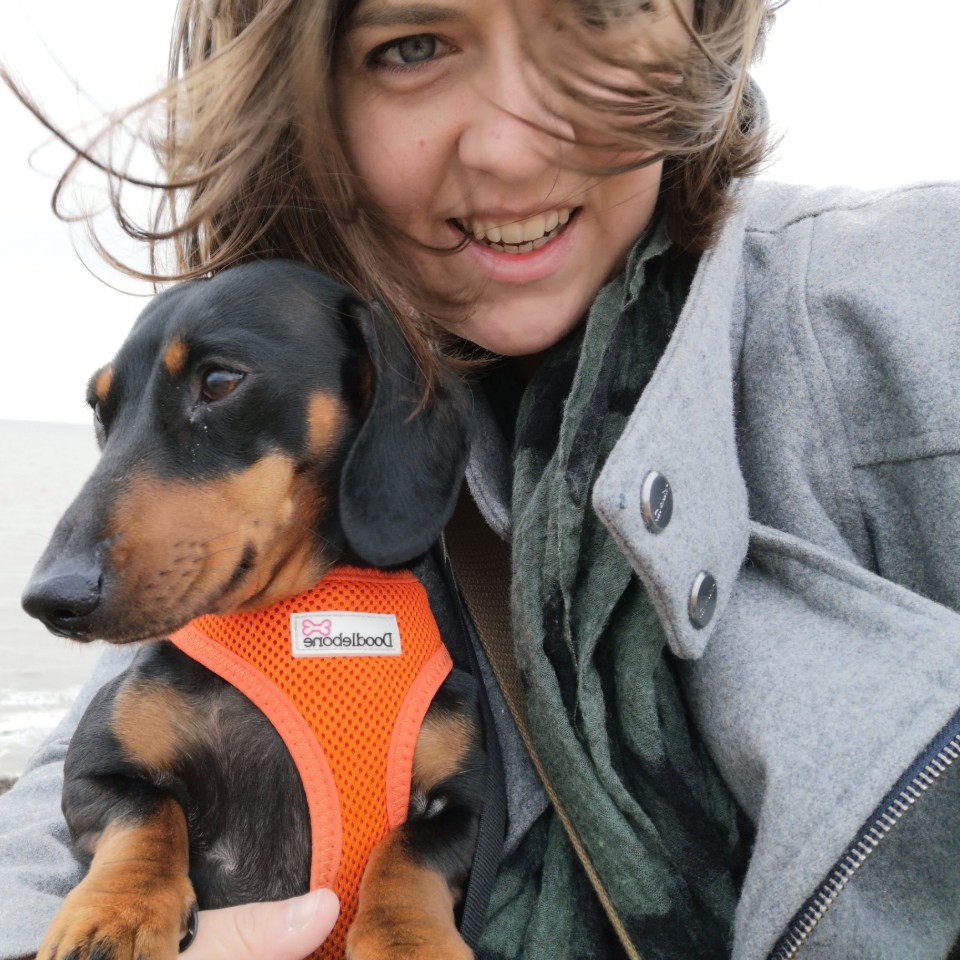Why does my dog follow me everywhere?
Can't seem to shake off your canine pal and wondering "Why does my dog follow me everywhere?" Here's a few answers...

"Why does my dog follow me everywhere?" is a question many owners ask, ones who will be familiar with the sensation of having a little shadow under their feet all the time. Sometimes, perhaps you’re holding the best dog treats, and it’s understandable, but at other times, you might be wondering whether their clingy behavior is altogether normal – or healthy.
There’s lots of reasons why a dog chooses to follow its owner around, most of which aren’t particularly problematic, or are straightforward to rectify. As their closest human companion, it’s very likely that you make your dog feel safe and secure – following you around is a good way to keep that feeling up.
It could also be the case that your pooch is bored or under-stimulated, and is looking to you to provide some entertainment. Investing in the best dog toys can be a simple way to get around that, as well making sure they get plenty of exercise. It could be that your dog is scared or anxious about something – such as a strange noise or a stranger in the house. You might find that your dog follows you around at certain times because they want something, such as their dinner or to go outside - you’ll often find that they do this at specific times that fit with their usual routine.
Lastly, your dog might simply be nosy and want to see what you’re up to. Building and maintaining a special bond with their owner is perfectly natural behavior for social animals like dogs, so unless your hound is being excessively clingy, or displaying worrying behavior when you leave, you don’t necessarily need to be too worried about it.
Why is my dog so clingy?
Many dogs display clingy behavior – it’s generally fairly normal. Some will go through phases of being more clingy than at other times, depending on other events going on, or particular needs they might have. For example, you might find that if your dog is unwell, they become more clingy than usual. Or you might find that they put on a display of clinginess when they’re after some food or attention.
You might also have noticed that your dog becomes clingier if you’re displaying any signs of stress or anxiety yourself. Dogs are very empathetic creatures and with humans they have a particularly strong bond with, they’ll often pick up on cues. Them clinging on to you is their way of showing they care – indeed following you around is thought to be one of the 10 signs your dog loves you.
You might also find that a clingy dog is particularly keen on using their tongue to show their affection too. Find out if this could be the answer to why is my dog licking me – and how to stop it when it becomes a bit much.
Get the best advice, tips and top tech for your beloved Pets

Why does my dog follow me and not my family?
If you’ve got several members of your (human) family, you might have noticed that your dog follows one person around more than others. It’s likely you’ll know if that’s normal behavior for your dog, but you might be wondering exactly why – and you may even be thinking is my dog sick, especially if they suddenly start doing it.
The good news is that that's almost always not the case – but there are some interesting reasons why a dog might pick out one member of the family over others. It’s highly likely that they see you (or whoever it is they’re following around) as the pack leader, and therefore the one that is most likely to keep them safe and secure, and who needs to be shown the most loyalty. Again, this is normal behavior for a social animal, and shouldn’t be too concerning.
Another straightforward reason could be that you’re simply the one that rewards them best for following you around. If you reach for the treats every time they follow you into the kitchen, for example, they’ll cotton on pretty quickly to that. You might also find that your dog favors you if you’re the one that has spent the most time with them in their life – and conversely, if you’re the one that leaves them for the longest periods (say while you’re at work), you might find that they’re extra clingy when you return home as they’re glad to have you back.
Lastly, you might find that a dog is following you around to protect you from some perceived threat – which is something we often see when a new baby enters the family too; the dog goes into protective mode and therefore becomes more clingy to one particularly person (such as the mum, or the baby itself).
Does my dog have anxiety?
A little bit of clinginess is not usually cause for concern, but separation anxiety can be quite a big problem. This is where the dog is so distressed at being apart from you that they display troubling behaviors such as excessive barking or howling, destruction, pacing, attempting to escape and so on.
It’s wise to look out for the signs of separation anxiety and work to improve it as soon as you can – otherwise the problem will get worse over time and you’ll have a very distressed dog every time you leave the house. It’s not necessarily a quick or easy problem to fix – and some breeds can be more prone to it than others – but it’s worth persevering with for the sake of both you and your dog.
Some simple things you can try to help prevent separation anxiety include those listed below. Remember to always seek advice from a vet or a trained behaviorist if you’re struggling or have strong concerns about your dog’s wellbeing.
Lots of exercise and stimulation
One of the key reasons for anxiety of any kind is due to a build up of energy that needs some kind of release. Make sure your pooch is getting plenty of exercise, particularly if you need to leave them alone for a short time. Be sure to have lots of toys for them to play with, and build in some play time to your daily routine ideally. Take a look at these dog enrichment ideas for more advice.
Creating a safe space
Having somewhere safe and secure in your home that your dog can retreat to – whether you’re there or not, is a good idea for creating a healthy distance between the two of you. Many dogs enjoy a sheltered crate or box, where they can feel protected and unthreatened. Keep this away from high traffic areas in your house for maximum tranquility.
Don’t reward clingy behavior
Dogs learn behaviors very quickly and easily. If you’re persistently rewarding them when they follow you, they’ll keep on doing it. Whether that’s giving them treats or using your voice to praise them – paying little attention to them following you around is a better way to make it stop. You could also use this as an opportunity to learn how to stop dogs begging for food. Additionally, you can attempt to “neutralize” certain activities – such as grabbing your keys or heading to a specific room - by not following through with either a reward or leaving them.
Amy Davies is a freelance writer and photographer with over 15 years experience. She has a degree in journalism from Cardiff University and has written about a huge variety of topics over the years. These days she mostly specialises in technology and pets, writing across a number of different titles including TechRadar, Stuff, Expert Reviews, T3, Digital Camera World, and of course PetsRadar. She lives in Cardiff with her dog, Lola, a rescue miniature dachshund.

